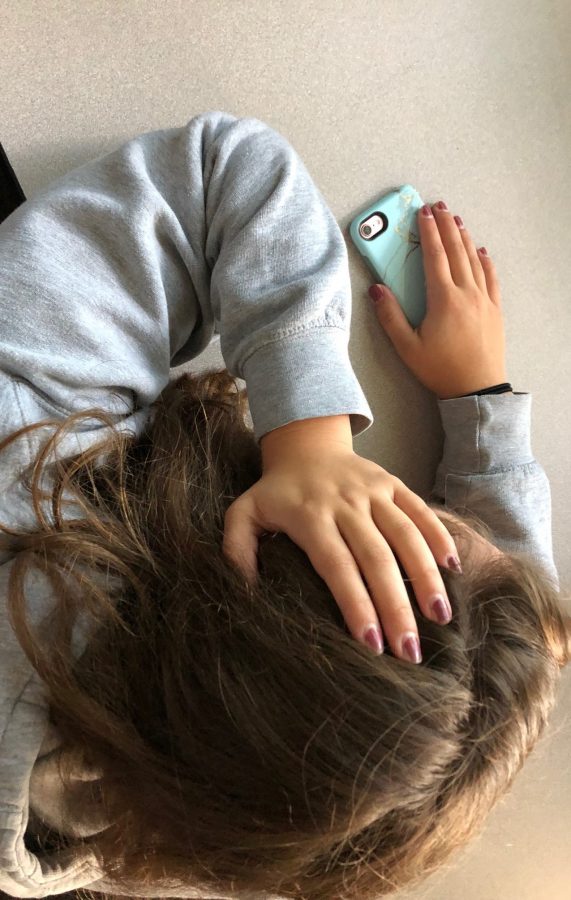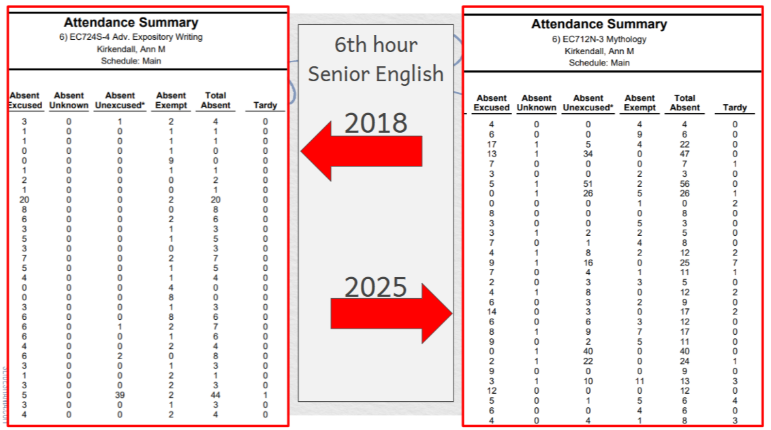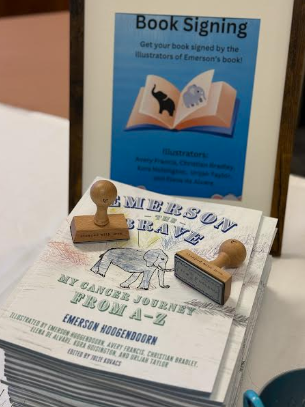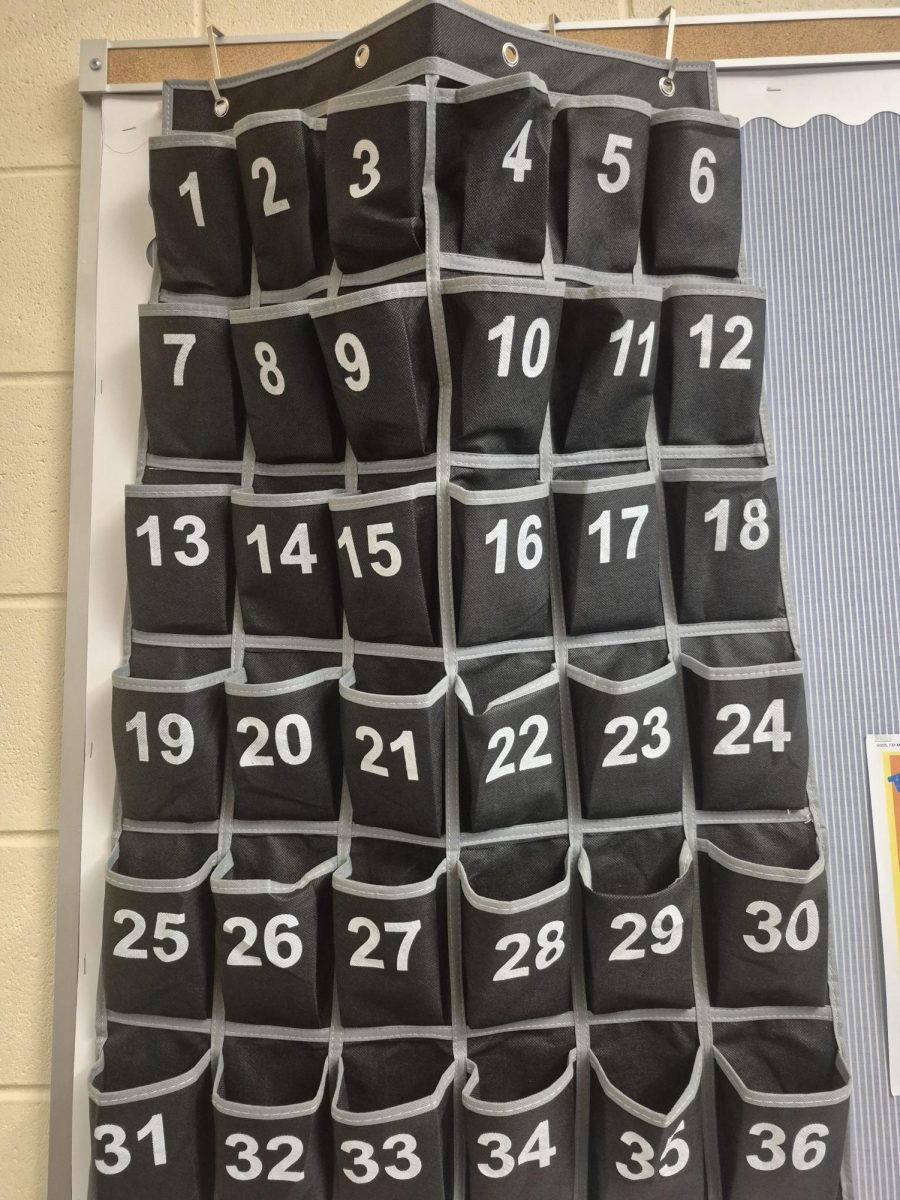Seventh grader Alyssa Jones just got home from a hot summer day at the beach with her friends.
It was an average day filled with tanning, gossiping, and of course, taking lots of photos to document the experience. To be honest, she had thought about calling her mom to come pick her up after about an hour because she was bored, but she knew she had to stay so she could post on Instagram.
Jones sat down in a chair on the back porch, still wearing her bathing suit, and pulled her phone out of her bag.
She opened the Instagram app, and the process began.
First, she had to decide which of the 150 pictures from the day was good enough to share with her 594 followers. There were some candid shots she liked of her and her best friend Claire sitting on a blue striped towel laughing as if they had just heard the funniest joke. Scrolling through the pictures, she found the most natural and flattering option. She thought she had found the one, but the more she examined it, she noticed that her forehead looked slightly too large, and her smile looked a little too forced. Time to keep looking.
Next she went through the group photos, hoping the ten other girls in the picture could distract from her imperfections. After scrolling through the pictures, she narrowed the options to three. She could eliminate one because Sarah just posted the exact same picture, and she knew she would get mad if she posted it too.
So that left her with two options. She knew which she preferred but decided to send both to the group chat anyway because her friends always know what to post.
After a group vote, the picture of everyone huddled in front of the water smiling came out the winner. Good thing she asked for opinions because that wasn’t the one she would have selected.
Next, it was time to edit.
After about 15 minutes of perfecting the image, her skin was a little tanner, the water a little bluer, and her teeth a little whiter. The key was to make herself look like all the girls she admired on her Instagram feed, but not make the editing too obvious.
By this point, about 30 minutes had passed, and she was almost ready to post. All that was left to do was to come up with a caption; this was by far the hardest part. It needed to be creative, but not weird. “Great day at the beach” would be too boring, and she couldn’t chose something too overdone. In the end she settled on “beach day” with a yellow sun emoji; it might be boring, but it was the best she could come up with. Hopefully people wouldn’t pay too much attention.
Finally, it was time to post.
Once again, she opened the app and tapped the plus sign at the bottom of the screen. She selected the picture and carefully typed out the caption, rereading it ten times to ensure there were no typos.
She looked it over one more time, just to make sure everything was perfect, then quickly hit the share button in the upper right corner. As soon as she saw her photo pop up, she quickly turned the phone off and set it down on the table next to her.
She took a deep breath and decided to wait at least one minute until she checked if people were liking it, but after about 30 seconds, she caved to the suspense. She turned on her phone and saw no notifications.
No likes.
No comments.
Why weren’t people liking it? Was it the caption? Or, was it just the picture? Could people tell she had edited it? Maybe people just didn’t like her, and that’s why they weren’t liking it. Her hands began to shake and her heart rate rose, as more seconds passed with no likes. Should she just delete the picture and start over?
Then, one like popped up. She began to calm down a little, but it was only one. Normally, she aims for around 200 likes, and anything under would be considered a fail, so she still had a long way to go.
She set her phone down and decided to wait at least ten minutes before checking again.
After roughly two minutes, she couldn’t stand the wait. She turned it on, opened the app, and saw five new likes appear.
For the next hour this cycle continued, her eyes glued to the screen, waiting for new notifications. Her mom asked her to go to the grocery store, and the whole time her phone was right by her side because she could not get away. When they arrived, she chose to stay in the car because she needed to keep her eyes glued to the screen. In the process, she missed out on valuable time with her mom.
To Jones, the likes and comments are more than a reflection of the pictures she posts; they are a reflection of how her peers feel about her.
Unfortunately many teens go through the same struggles as Jones. Since the introduction of cell phones, the number of teens who struggle with anxiety, specifically social anxiety, has been on the rise.
Grand Rapids Clinical Psychologist Lisa K. Walsh has seen too many cases similar to Jones, and believes social media is one of the contributing factors to the recent rise in social anxiety. “Continually evaluating one’s own appearance, social circle, intelligence, athleticism, accomplishments, experiences, travel destinations, and adventures by trolling others’ glossy and oftentimes heavily edited and inflated posts fuels self-doubt and is an utterly artificial barometer of self-worth. Doing so fuels a vicious cycle of never feeling good enough, met by increasing attempts to be perfect, and resulting in heightened anxiety when those attempts invariably fail. In a nutshell, social media contributes to social anxiety because it involves seeking external, rather than internal, validation of the self,” Walsh said.
School Social Worker Ron Lindstrom has also seen phones in general lead to a rise in social anxiety. Working with all grade levels, he has seen the greatest rise at the middle school, which is the age many students get their first phone. “By sixth grade, most students have phones, and that never used to be the case, obviously. It’s become just part of accepted expectations of society. And I think there’s a huge, much more than in the past, huge dependency for students to rely on using that phone for their communication because it’s easier.”
This reliance on phones has made it all too easy to hide behind a screen, rather than engage in real-life conversation. Without communication in person, it is difficult to develop the social skills that build confidence. “It’s certainly not at the personal level that it used to be when some of us older folks were growing up, where if I really wanted to get to know you as a person, the only way I could really do that would be to be with you, and experience things with you, and now, that’s not the case at all. So, I think that lends itself to having less confidence,” Lindstrom said.
This lack of confidence has some serious negative consequences. “I’m amazed at even some of the high school students that I work with that don’t have the confidence to pursue asking for an application or going about doing different things that would require them to make personal connections with other people.”
Lindstrom also points out the recent increase of mental health awareness, and the importance of talking about topics in the mental health field, such as anxiety. “The stigma has gone away. There used to be a lot of stigma attached to identifying as someone who suffers with anxiety or depression, but that really has gone away, so that’s a positive. Mental health isn’t something anyone would chose, and often times there’s a lot things that contribute that are beyond someone’s control that lend to mental illness.”













